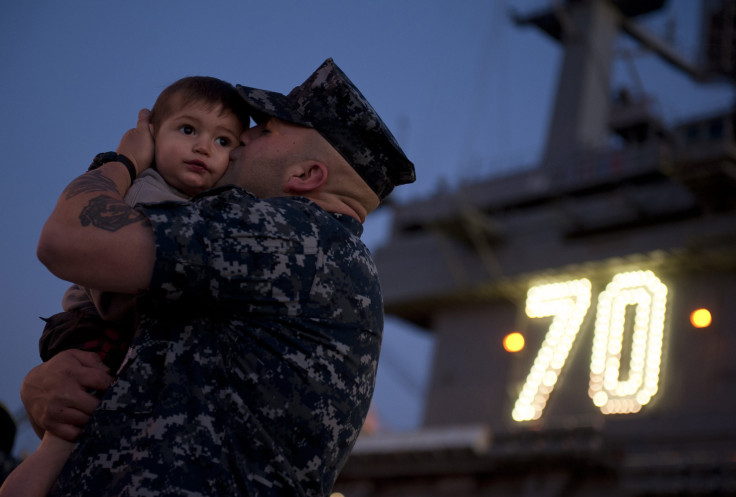New Navy Uniform: Flame Resistant Camouflage Pattern Offers Updated Take On Classic Design For US Forces

The Navy will start using lighter-weight, flame-resistant uniforms in October, a long awaited change on the force's classic design aimed at improving comfort and safety. The new uniforms resemble the coveralls sailors have worn at sea for years, but the new tri-fiber blend allows moisture to more easily escape.
The Navy said the uniforms weigh “significantly less” than the current style and will include flash-arc protection to guard against electrical currents. They come in a green camouflage pattern.
Safety concerns were raised in 2012 when the Navy's uniforms at the time were found to be easily flammable. The Navy’s Type I working uniform at the time was found to catch fire from a single match and then melt and drip when burning. It also wouldn’t self-extinguish.
New coveralls made from a cotton fabric treated with flame retardant were released in late 2013, but they were declared too hot by sailors, according to Lt. Cmdr. Stephanie Turo, a Fleet Forces Command spokeswoman. The latest uniforms, meanwhile, are called Improved Flame Resistant Variant, or IFRV.
“Shipboard wearability and functionality was of extreme importance with the development of the IFRV,” Adm. Phil Davidson, commander of U.S. Fleet Forces Command, said in a statement. “We will always make safety a priority, but if we can also improve quality of life for our Sailors in doing so, then everyone wins.”
The uniforms will be issued by each ship. It was not immediately clear how much the overhaul would cost the Navy.
Sailors aboard the amphibious assault ship USS Kearsarge, guided missile destroyer USS Carney and fast-attack submarine USS Newport News are already using the new uniforms. Of 700 sailors polled, 89 percent said they preferred the new coveralls.
The Navy is also considering changing its boots to make them more comfortable for sailors.
© Copyright IBTimes 2024. All rights reserved.






















